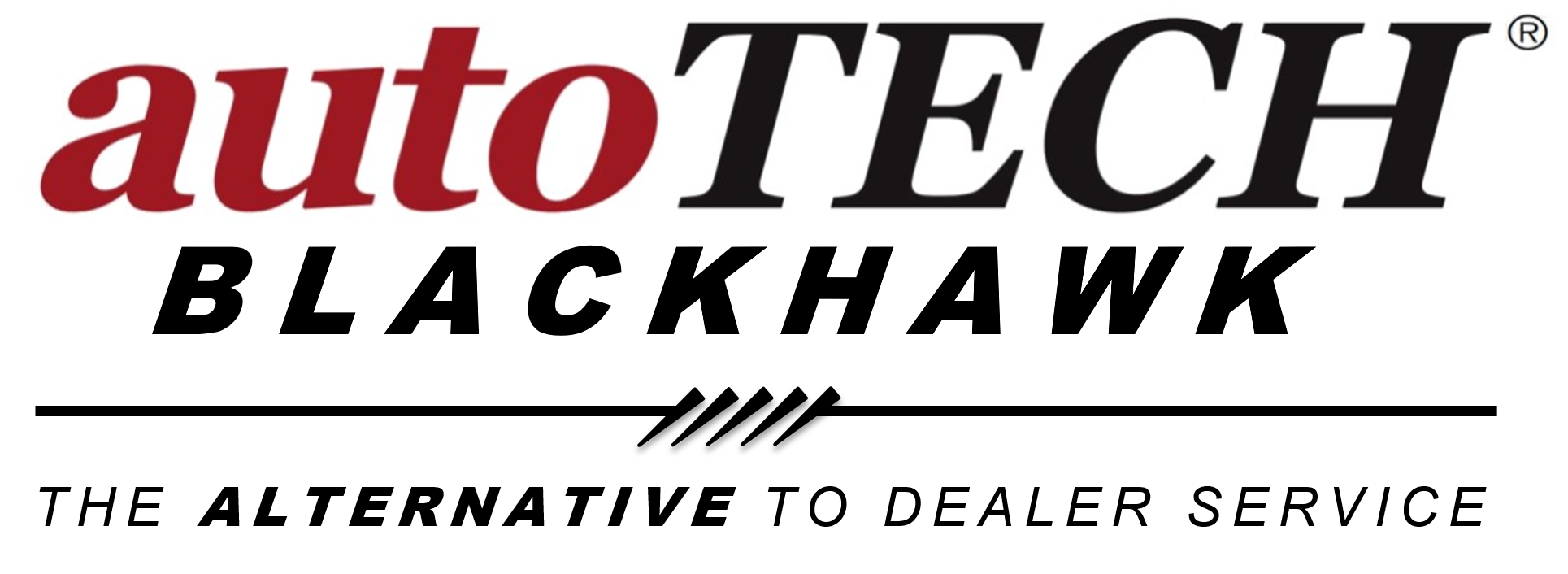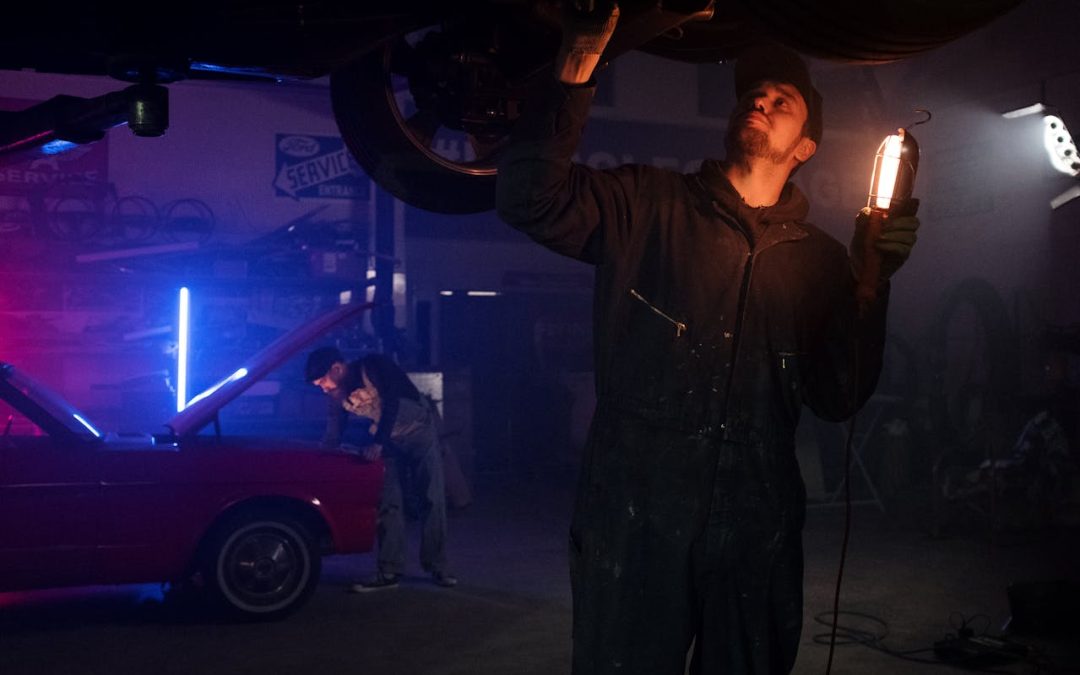Worn brake pads, squeaks, leaking brake fluid, warped rotors, and a soft brake pedal. Each one pops up in lots of cars, regardless of make or model. Worn pads equal slow stops. Squeaking can indicate dust or ancient pads. Brake fluid leaks from the soft pedal and drop in stopping power. Warped rotors make the entire car shake upon braking. Soft brake pedals often indicate air in the lines or leaks. When you know these common problems, you can identify the trouble quickly and repair it before it gets out of control. The following section peels back each problem and describes easy remedies that anyone can attempt.
Key Takeaways
- These are the top 5 brake issues we see every week (and how to fix them). As we mentioned in our post the other day, brake repairs are one thing you can’t afford to put off.
- Any symptom, from strange noises to changes in pedal feel, should be met with careful inspection and immediate replacement of any worn or damaged parts in order to prevent expensive system damage and maintain peak braking performance.
- There are a lot of variables that determine brake system life and reliability, including environmental factors, driving habits, and quality of components. By driving smoothly and using higher-quality components, you can significantly extend premature wear.
- Full service to your brakes means inspection, proper selection, installation, and test drives to ensure that everything in your braking system is right.
- The best way to diagnose modern brake systems is with a combination of electronic diagnostic testing and manual inspection.
- Taking a proactive stance when it comes to your brakes — routine checks and early intervention — not only extends the service life of various brake components, but it also supports your overall vehicle safety, minimizing the risk of unexpected breakdowns and costly repairs.
The 5 Most Common Brake Problems
Brake problems are universal, and neglecting them may take you for a dangerous drive or an expensive trip to the shop. The list below outlines symptoms and causes of the top five brake problems seen globally:
- Squealing or grinding noises: worn pads, debris, or damaged rotors
- Spongy pedal: air in brake lines, low or old fluid
- Vehicle pulls to one side: uneven pad wear, frozen caliper, misaligned wheels, faulty hydraulics
- Steering wheel shake: warped or damaged rotors, poor caliper function
- Brakes that drag: stuck caliper, worn components, hydraulic faults
The High-Pitched Squeal
A high-pitched squeal is an early warning that brake pads are wearing thin. Insert headline MOST PADS HAVE A BUILT-IN WEAR INDICATOR THAT’S NOISY WHEN THE FRICTION IS LESS THAN 3MM (1/8″). Dust or road debris caught between the pads and rotors can make this noise.
Check pads for wear and locate the indicator tab. Clear out any debris that may be caught between the pads and rotors. Owner’s Manuals tend to downplay the importance of friction material wear. This keeps braking safe and helps rotors last longer.
The Deep Grinding
Deep grinding signifies that the pads are gone, and metal is now contacting metal. This both wrecks your rotors but can wear down calipers and other hardware as well. Driving on grinding brakes can lead to rotors that need replacement, which is far more expensive than just replacing pads.
Schedule repairs immediately if you hear grinding. Have a tech check for rotor or caliper damage. Behavioral modifications — like early slowing and avoiding hard stops — can make pads last. Periodic inspections, every 20,000 kilometers or sooner if symptoms develop, will identify problems early.
The Spongy Pedal
A spongy brake pedal is typically caused by air in the brake lines or low fluid. Brake fluid takes on moisture and breaks down. If the pedal feels soft or sinks, inspect the fluid level and quality.
It might require bleeding. Check for leaks around the master cylinder or lines. Replace worn parts. Most fluids should be replaced every two years for safety and optimum performance.
The Sideways Pull
If the car pulls sideways when braking, check alignment and tire condition first. Uneven pad wear is typical and can cause this pull. It could be a frozen caliper or a collapsed brake hose.
Other potential reasons are a bad master cylinder or leaking fluid. A quick check can save you from blow-out repair bills.
Get brakes checked if pulling begins, or every 20,000 km.
The Steering Wheel Shake
If your steering wheel vibrates when you brake, that can be a sign that your rotors are warped or worn. Runout or uneven pad deposits can cause this shake. Rotors need to be smooth and flat for even braking.
Inspect calipers and pads for proper fit and function. Repairing any rotor or caliper issues promptly maintains smooth, safe driving.
Beyond The Obvious Symptoms
Subtle brake problems didn’t detect themselves before they turned serious. As with a burning smell, a stiff pedal, or weird noises, early attention to less obvious symptoms helps you avoid bigger problems down the road. Routine inspections and knowing what these symptoms signify can enhance safety and minimize repair expenses at a minimum.
The Burning Smell
A burning smell, particularly following a long drive or multiple stops, indicates overheated brake components. This frequently occurs when drivers overuse brakes, such as on hills or while carrying a load. Heat buildup deteriorates essential ingredients, rendering brakes untrustworthy.
Brake fluid leaks make it overheat. Even a pinhole leak can drop fluid levels and create additional friction. Fluid drops under the car or a low reservoir for brake fluid are a warning. A white sheet under the car overnight aids leak detection for several reasons.
Ventilation around the brakes dissipates heat. If air flow is obstructed by debris or aging shields, heat can’t dissipate. This only adds insult to injury, accelerating wear. If you smell burning, that’s a brake-check. Overlooking this indicator can result in permanent damage or abrupt brake fade.
The Stiff Pedal
A stiff brake pedal typically indicates the brake booster or vacuum lines that assist in applying force. If the pedal is hard and stopping requires more effort, check the booster for leaks and ensure the vacuum hose is attached and intact.
There’s the master cylinder to consider. If it leaks or loses fluid, pedal effort increases, and stopping distance increases. This can be the result of low brake fluid, leaks, or a failing master cylinder. Timely repairs maintain the brake system’s responsiveness and decrease the probability of complete brake failure.
The Intermittent Noise
Rattling, squealing, or grinding noises that come and go could indicate loose or damaged components such as clips or pads. Flyers can become wedged in brake assemblies, causing strange noises and altering braking performance.
Watch for changes in noise. If the noise intensifies or becomes more frequent, it could indicate that a component is deteriorating. Worn pads, less than 3 millimetres thick, must be replaced immediately to avoid rotor damage and shuddering. Routine checkups—every 20,000 kilometres or earlier if symptoms crop up—nab these maladies before they expand.
Other Subtle Signs
A car that pulls to one side during braking frequently indicates uneven pad wear or a defective component.
A soft pedal or airiness indicates that air has gotten into the lines or the master cylinder is going out.
Brakes fluid suck water, should be changed every two years, and keeps performance steady.
Brake fade from heat is typical in hills or heavy loads.
Why Brakes Fail Prematurely
Brakes are key to safety, yet they commonly wear out prematurely. There are a variety of reasons, some controllable and some not, for premature brake failure. These encompass mechanical defects, environmental factors, driving behavior, and part quality. Below, key factors are detailed:
- Brake fluid leaks from worn seals in the master cylinder, caliper, or wheel cylinder can cause a sudden loss of braking. Low brake fluid is usually an indication of such leaks, and if not addressed, the brakes can fail. Brake lines, thin and flexible, are susceptible to corrosion and physical damage, endangering failure.
- Worn brake pads and rotors, for example. Disregard the grinding noises, or don’t replace them on time, and you could have unsafe braking and even harm other components. Not fully releasing the parking brake can cause pads to wear faster.
- Stuck calipers can make the vehicle pull to one side during braking, which reduces your control and increases tire wear on that side.
- Driving habits—especially sudden stops and aggressive driving—speed wear, reducing the life of brake components.
- Factors like wet or rough roads, extreme weather, and short journeys in stop-and-go traffic subject brakes to additional strain and accelerated wear.
Driving Habits
Most of us are guilty of this, but hard stops and sudden accelerations are the number one cause of brake wear. Smoother techniques — coasting to a stop and planning — reduce wear and prolong component life. Drivers who know about these perks check brakes more frequently, which means they catch problems like sticking calipers or uneven pad wear early. Though aggressive driving is occasionally unavoidable, it can total up to more expensive repair bills and more frequent part replacement.
Environmental Factors
Wet roads, snow, and ice all make brakes work harder. Water acts as a lubricant and causes pads to wear faster. Wooden road debris and potholes cause little chips out of rotors and pads. Stop-and-go traffic wears your brakes down since they are used over and over again before they can cool off. Short trips keep brakes from reaching ‘ideal’ temperature, meaning they’re less effective and more prone to corrosion. Salt or humid environment rust can eat at brake lines and hardware, demanding preventive measures such as frequent washing and inspection.
Component Quality
|
Brand |
Pad Material |
Rotor Design |
Avg. Lifespan (km) |
Quality Rating |
|
Brand A |
Ceramic |
Vented |
60,000 |
5/5 |
|
Brand B |
Semi-metallic |
Solid |
40,000 |
4/5 |
|
Brand C |
Organic |
Slotted |
30,000 |
3/5 |
Premium brands—particularly those with ceramic or semi-metallic pads—provide superior lifespan and performance compared to budget options. While it might be tempting to save a few bucks, inferior quality pads and rotors can fail prematurely, put you at risk, and cost you more in the end. Trust me, spending the extra money for the good brands means dependable stops and less fixing.
Maintenance Practices
Regular brake inspections detect leaks, worn pads, or seized calipers. Replace brake fluid as required. Change pads and rotors as scheduled. Never dismiss noises.

The Anatomy Of A Proper Brake Service
A proper brake service is a step-by-step process that covers inspection, part choice, installation, and post-service checks. Every step counts — for safety, system health, AND performance. A good checklist and the best parts are the secret sauce to long-lasting brakes.
The Inspection
A visual inspection of the brakes begins at the pads, rotors, and calipers. Check for uneven pad thickness or grooves and scoring on the rotors. These signs indicate wear or potential damage. Look for stuck calipers because these can cause your car to brake unevenly or pull to one side.
Inspect brake fluid levels in the cylinder. Low fluid can point to leaks, typically from worn seals in the master cylinder, caliper, or wheel cylinder. Check the brake lines, which transport fluid from the master cylinder to calipers, for leaks or damage. Listen for grinding noises when you brake, usually an indication of worn pads. Record all observations. Record keeping will monitor brake health and identify recurring problems at their inception.
The Component Choice
Select brake parts that suit your car’s specifications. For instance, use only original size and grade pads and rotors. Your driving habits and the roads you drive on inform your selection as well. Hard city driving requires tougher pads, highway use, a bit less so.
Some drivers opt for slotted or drilled rotors to aid in cooling the brakes and avoid fade under heavy use. If in doubt, consult a brake specialist or reputable mechanic. Selecting quality components extends the life and enhances the performance of your brakes—ideal if you’re driving in demanding environments.
The Installation
Put new parts in, according to the manufacturer’s guide. Use the proper tools so you don’t harm the new pads or rotors. A torque wrench is a must for tightening bolts to the proper setting. This prevents the hardware from working loose.
Be sure that every component is aligned and seated properly, or you could experience braking problems down the line. Make sure calipers slide freely and don’t stick. Doing it right today saves you hassle and keeps you safe tomorrow.
The Test Drive
Try the brakes in a safe location. Pay attention to strange sounds such as grinding or squealing. Test both soft and hard stops for feel and power. Ensure the brake warning light operates and extinguishes after the check.
A gentle drive at varying speeds will assist in identifying problems before you get too distant.
How We Diagnose Modern Brake Systems
Electronic tools assist in reading brake system data quickly, yet hands-on inspections identify what computers overlook. Both are necessary for secure, dependable braking. See below for a quick comparison:
|
Method |
Strengths |
Limits |
|
Electronic Diagnostics |
Fast error code readout, real-time data |
Misses small physical faults |
|
Manual Checks |
Finds wear, leaks, and subtle issues |
Slower, needs skill, and time |
Electronic Tools
Diagnostic scanners are now a must for checking brake problems. They connect to your car’s onboard system to extract error codes indicating failed sensors, ABS issues, or hydraulic issues. These codes take the guesswork out and help repair go faster.
Software goes even further. They display live brake data—pressure, fluid temp, pad wear, and ABS cycles. This aids in detecting issues such as a sticky caliper or a deteriorating master cylinder. For instance, if your car pulls to one side during an ABS stop, scanners can indicate if a wheel sensor is responsible. So good shops train their techs on new software often, because systems change fast. Training makes sure that all of our techs can detect both the obvious and sneaky issues. Still, a savvy strategy combines computer scans with actual checks for a comprehensive perspective.
Manual Checks
Hands-on inspections are crucial. A tech inspects the pads and rotors for wear. Squealing when you brake? Pads are thin—time for service. Rotors get grooved or rusted if neglected. They examine brake fluid visually and manually. Low fluid can indicate a leak, or simply pads that are due for a change. Master cylinder, lines, and hoses get a look for cracks, bulges, or leaks. If a car pulls to one side, a stuck caliper or collapsed hose could be the culprit. Techs always couple these checks with what the computer says to get the clearest answer.
Data Analysis
Onboard computers record heaps of brake information. By reading this, it helps us spot trends, such as slow pad wear or quick fluid loss. These readouts indicate whether a rotor is warped or if the ABS behaves strangely during hard stops. As virtually every car now comes equipped with four-wheel disc brakes, such routine checkups — roughly every three months — spot little malfunctions before they spiral.
Staying Current
Brake technology evolves fast. ABS, electronic brake force, and even smart sensors can alter how brakes function. So we stay on top of new systems and frequently update our tools.
Proactive Brake Care Saves Money
Proactive brake care is a smart move for any driver looking to save money and stay safe on the road. When you catch brake problems early, like worn pads or rotors, you can address them before they become more serious and costly. For instance, early brake pad changes may run $100 to $300 per axle, and rotor replacements $300 to $600 per axle. If you wait too long, you could need a full brake system overhaul, which can run $1,000 to $3,000+. These figures highlight how proactive brake care saves money, particularly as a lot of problems are minor at the start and will only get bigger if overlooked.
Early detection counts. Motorists need to be vigilant for symptoms such as squealing or grinding when braking, a soft or spongy pedal, or a vehicle that seems to take longer to stop. All of these are red flags that the brakes require servicing. If you experience any of these, quickly act. When you catch these warning signs early, you can get ahead of the risk of bigger problems, like damaged calipers or even full brake failure. That’s not just saving money—it’s keeping everyone safe out there, because when it comes to emergencies, a second saves lives.
Regular inspections are the secret to extending the life of your brakes. It never hurts to get your brakes checked once a year or 19,000 kilometers, whichever comes first. This assists in detecting minor problems, such as uneven pad wear or a loose brake line, before they escalate. Basic maintenance, like checking fluid levels and leaks, is handy for keeping your system in shape. By staying on top of these inspections, you extend the life of your pads, rotors, and other components, which saves money.
Good parts and skilled service are an investment that pays off as well. Less expensive components may wear out early and underperform in extreme circumstances. Quality pads and rotors better handle heat and stress, which means better stopping power and longer life. Experienced mechanics can detect issues you may overlook and ensure proper installation, enhancing safety and performance.
- Watch for warning signs: noises, pedal feel, stopping distance
- Schedule yearly or every 19,000 km brake checks
- Use quality parts and trusted service shops
- Keep brake fluid at the right level
- Change out pads and rotors when necessary, not just when they let you down.
Conclusion
Brake problems are common, but all of the issues have obvious remedies. Squeaky pads, warped rotors, low fluid, sticky calipers, and worn hoses top the list. Early checks save you time and cash. Great shops use scan tools, clean parts, and know what to look for. A quick test drive or fluid check says a lot. Brake parts wear out with hard stops and heat, not just time. A good brake service keeps things easy and secure. To keep your ride in tip-top shape, make brake checks a habit. Leave your brake tips or stories down below. Every repair keeps another human safe on the road. Keep studying, stay fresh, and let’s keep cars cranking strong!
Frequently Asked Questions
1. What Are The Most Common Brake Issues In Vehicles?
Here are the top 5 brake problems we see every single week. Nipping these issues in the bud keeps your ride safe and dependable.
2. How Can I Tell If My Brakes Need Repair?
Listen for any noise, feel for any vibration, or a soft brake pedal. If there’s any change in braking performance or warning lights, it’s a sign that your brakes should be checked sooner by a professional.
3. Why Do Brake Pads Wear Out Quickly?
Stop-and-go, heavy loads, and cheap parts make pads wear out quickly. With proper maintenance and quality materials, they can last.
4. What Is Involved In A Proper Brake Service?
Call it your brake service, which means looking over all your components, replacing pads, cleaning parts, and checking brake fluid. Expert technicians make sure each part functions properly for your protection.
5. Can Modern Brake Systems Be Diagnosed At Home?
Today’s brake systems are complicated and require specialized diagnostic equipment. Although you can look for obvious symptoms, it’s best to leave any in-depth diagnosis or repair to a trained technician.
6. How Does Proactive Brake Care Save Money?
Proactive inspections and repairs keep your brake system far from major failure. This saves your brake system’s life, minimizes repair expenses, and keeps you safe on the road.
7. Are Vibrations While Braking A Serious Problem?
Yes, that vibration typically indicates warped brake rotors or uneven wear. Ignoring them can result in costlier repairs and unsafe driving conditions. Early attention keeps repairs easy and expenses down.
Need Brake Repairs You Can Truly Rely On?
When it comes to your safety, don’t settle for average. At autoTECH Blackhawk, we specialize in high-performance, precision brake repair backed by experience and trust. What sets us apart? We’re not just about fixing cars — we’re about building real relationships with our clients and keeping your vehicle running safely for the long haul.
From squeaky brakes and soft pedals to full rotor and pad replacements, our expert team handles it all with care and precision. You’ll get peace of mind with our industry-leading 3-year/36,000-mile warranty, plus the confidence of knowing we only use top-quality, manufacturer-recommended parts.
Your brakes keep you safe — let’s make sure they’re ready for anything.
Call our friendly team today to book your contactless brake repair consultation. Let’s get you back on the road, worry-free.


